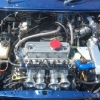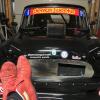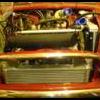just a comment here Torque steer is i believe the wrong word. what i think you are asking about is tram lining. how the car behaves over imperfections on the road surface.
and how the car behaves has much to do with the suspension set up also having an ET close to/or zero can help.
well tram lining too, but i did mean torque steer. like does it pull(turn) almost too much when going around corners fast?
Torque steer is very common in a straight line and very often this is induced by high engine torque through unequal length driveshafts. The effect of oversteer or understeer when cornering fast is more to do with suspension setup. You ask about pull(turn) through fast corners, this is more commonly associated with incorrect corner weighting, suspension set up, tyres far wider than the original design parameters for the original suspension set up, hence the understeer or oversteer. I know Nick can answer for himself but technically he was correct in saying its more about tramlining. This is something I have experience of and I'll say it's almost impossible to dial out if you want the look of wide tyres on a road Mini. I have the worst of all worlds, high torque and 175x13 tyres. If you fit wide tyres with a standard engine, the cornering, while not being great, won't be as bad as a high torque output engine.
un equal length drive shafts. torque steer sorry no. some great sales marketing.
It's interesting you say that, I thought with unequal length drive shafts the torsional stiffness had to be equalised; this is why some manufactures have a hollow shorter drive shaft and a solid longer one. If you don't equalise the torsional stiffness how do you stop more torque going through one shaft than the other?























